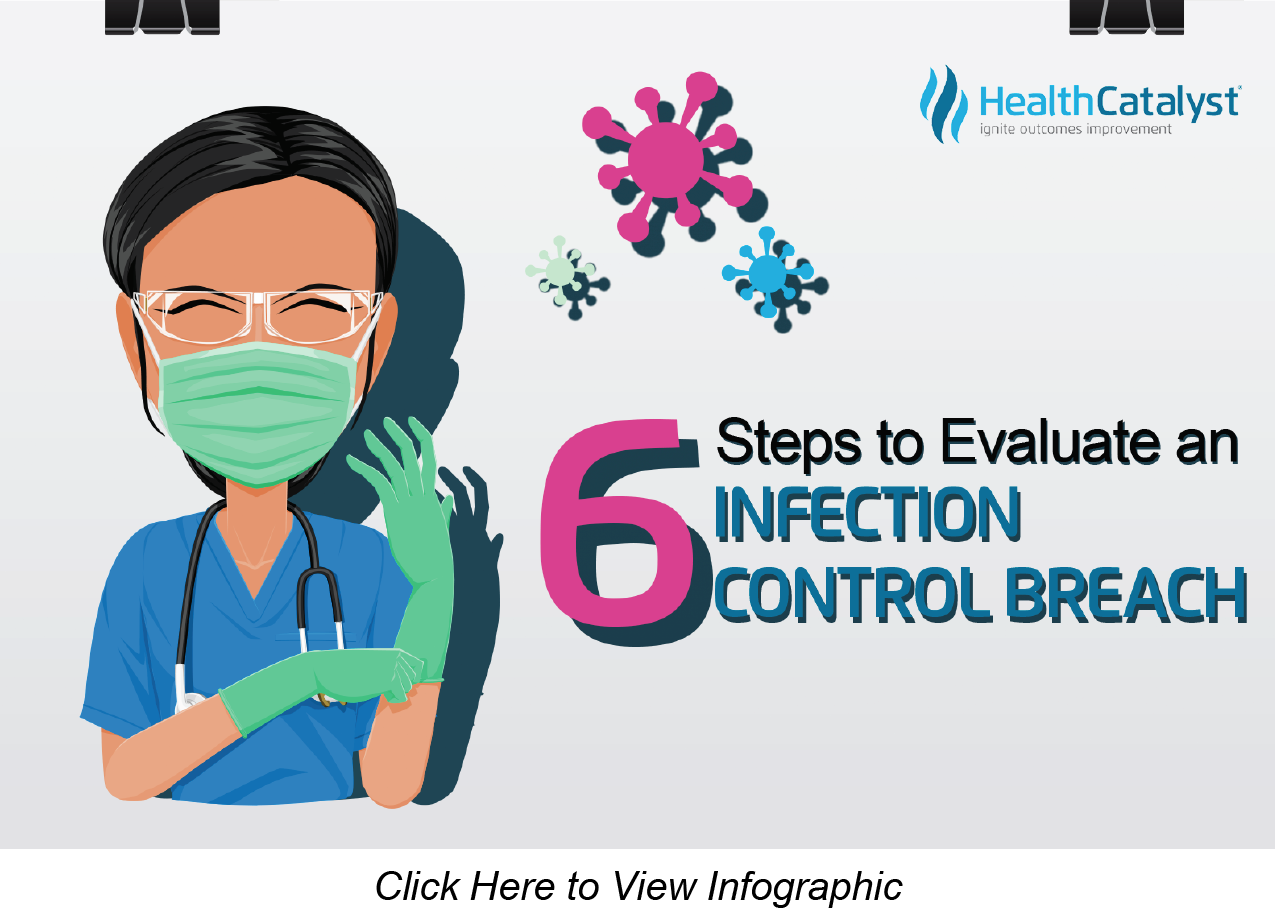Despite widespread efforts to improve patient safety, infection control breaches still happen at an alarming rate. In order to improve patient safety and prevent infections, healthcare organizations need to have infection control procedures in place and regularly assess protocols and adherence to these policies. In the case of an infection control breach, organizations need to be prepared to act quickly and follow a six-step evaluation procedure outlined by the CDC:
1. Identify the infection control breach.
2. Gather additional data.
3. Notify and involve key stakeholders.
4. Perform a qualitative assessment.
5. Make decisions about patient notification and testing.
6. Handle communications and logistical issues.



In 1999, the Institute of Medicine published the now famous report “To Err Is Human,” which dropped a bombshell on the medical community by reporting that up to 98,000 people a year die because of mistakes in hospitals. The number was initially disputed but is now widely accepted. Medical error is one of the leading causes of death in the U.S. and the rate of harm is even higher. According to the World Health Organization, the chance of being harmed while traveling by plane is one in a million, while the chance of being harmed in healthcare is only one in 300. Infection control breaches–when there is a failure to follow established infection control procedures that prevent the transmission
of infectious organisms–remain a major threat to patient safety.
In 2004, a health system in North Carolina notified more than 3,500 patients of its failure to appropriately clean surgical instruments. In 2008 and 2009, three Veterans Affairs medical centers notified more than 10,000 patients about a failure to appropriately clean reusable medical equipment. In 2018, a hospital in Denver cancelled all surgeries after it was identified that the hospital had engaged in inadequate surgical instrument sterilization practices for 18 months – notifying 5,800 patients that they may be at risk for Hepatitis B, Hepatitis C, or HIV. Continued infection control breaches suggest healthcare organizations need to increase efforts to improve the system.
To prevent infections and improve patient safety, healthcare organizations need to implement infection control procedures, regularly assess infection prevention protocols, and establish an infection surveillance program that helps ensure adherence to established protocols. Taking these steps will help prevent an infection control breach from occurring. When facing a breach, organizations need to respond efficiently and effectively.
The CDC outlines the following six steps to evaluate infection control breaches:
In a previous role, I was asked to lead the operational response to an infection control breach, notifying 260 patients that they may have been exposed to blood-borne pathogens. The breach involved surgical instruments that had been soaked in antimicrobial agents and went through steam sterilization, but additional cleaning steps were not performed as expected.
Upon identification of the breach, the issue was escalated to the leadership team and investigated in accordance with the CDC recommendations. The breach was classified as a Category B Breach (likelihood of blood exposure is uncertain), and after much thoughtful discussion, public health leaders and health system leadership made the decision to notify the affected patients.
Patient notification and management of the recommended Hepatitis B, Hepatitis C, and HIV testing was complicated and stressful for both the patients and the staff involved. Managing the event required that we take the following steps:
We needed to complete these actions as quickly and effectively as possible, carrying out many of them concurrently. It was challenging to balance these tasks–while we sought to restore trust with the patients and public by transparently disclosing the event in a competent, caring manner, we also had to ensure we had adequate time to develop the detailed workplans that would result in the most positive experience possible for the patients. Because we wanted to ensure the breach was not disclosed publicly prior to the impacted patients receiving notification, we involved as few people in the planning activities as possible, which delayed the timeliness of patient notification.
Our team developed an analytics application that was used to track all patient activity. The application minimized the need to access the electronic medical record, ensuring staff accessed the minimum amount of protected health information necessary to effectively manage the event. The application supported staff in escalating issues to the responsible party (risk management, legal, public information officer, lab, physician on call, etc.). We also used the application to monitor performance, track call work volume, and visualize the number of patients that had completed testing and the number still outstanding. We were able to use the application to monitor turn-around time from date of testing to results notification and inform our decision about when to close the call center.
As for protocol changes, the sterilization of supplies was returned to the centralized sterile processing department and the ordering process changed to ensure infection preventionists were included in any/all purchasing of devices used for sterilization–preventing the root cause that contributed to the breach in the first place. The patient notification process was effective, with 92% of the patients completing the recommended testing. While more needs to be done to prevent infection control breaches from occurring and improve patient safety, we responded as quickly as possible in a way that would rebuild trust with both patients and the public.
Would you like to learn more about this topic? Here are some articles we suggest:
Would you like to use or share these concepts? Download this presentation highlighting the key main points.